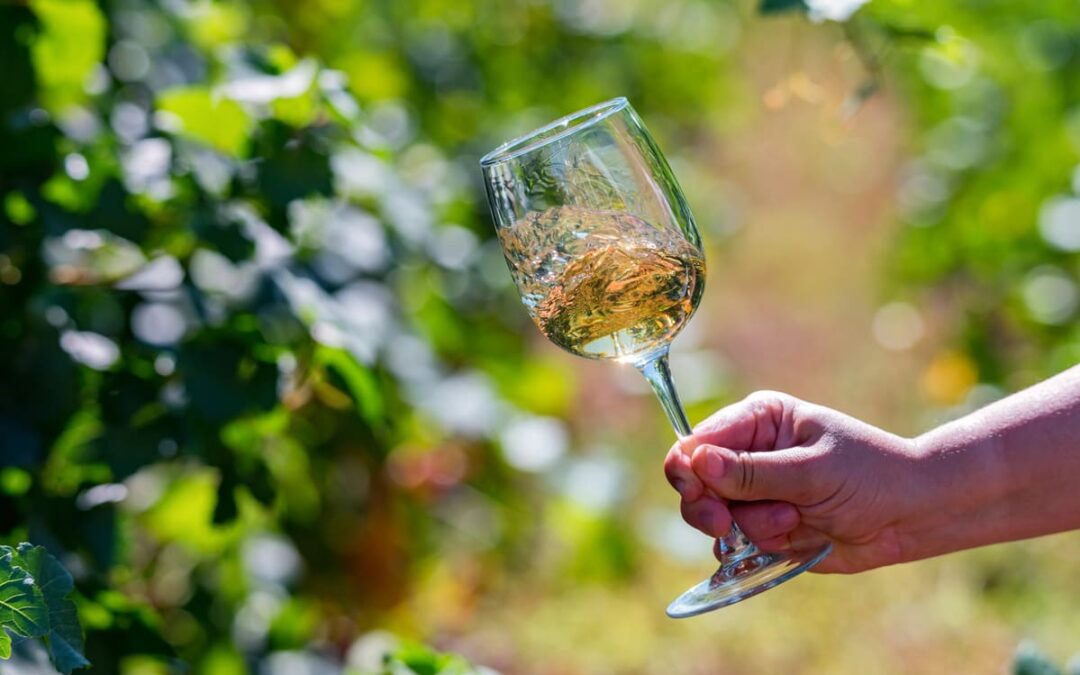From vineyard to bottle, winegrapes go through a fascinating journey of change. The processes that take place all depend on the climate, the grape, and the choices of the winemaker. The best Napa Valley wineries are a unique amalgamation of these factors, and wines are cultivated to express the specific terroir of our region.
To better understand this, let’s go over the foundation of viniculture, and how you can truly appreciate the wine in your glass.
What happens in the vineyard
Winemakers have to choose the perfect time to harvest their grapes. They make their decisions based on aroma, flavor and texture. They also consider sugar levels, which rise as grapes ripen, acidity levels, which drop as summer progresses, and flavor development.
There are various ways to test these factors, but harvest time also requires a bit of intuition, and the ability to anticipate the ultimate wild card: weather.
When it’s time to harvest, vignerons will either hand-harvest or use mechanical harvesters.
- Hand harvesters use tools to harvest ripe grapes, place them in bins, and carry them to the winery. Winemakers who hand-harvest prefer the method because it is gentler on the grapes and keeps them from splitting open before they reach the winery.
- Mechanical harvesting uses an over-the-row machine to harvest more grapes in less time. It allows for more affordable wine production but can be harsher on the grapes.
The winemaking process
Once the grapes are picked and carried to the cellar, it’s time to sort, crush, and ferment the grapes.
Sorting & Crushing
Grapes are sorted to remove the stems, leaves, and other raw materials that might have been collected during harvesting. This material can affect the quality of the wine, leading to off flavors. During this time, unripe or rotten grapes are also removed.
After sorting, the grapes are crushed. This step ensures that the grapes are split open to release the clear juice and allow contact with the skins, which is where the aroma, color and flavors come from. This process also exposes the sugars in the juice so that fermentation can begin. There are two main ways of crushing grapes:
- Traditional foot stomping is an ancient way of crushing grapes that is still used in some wine regions.
- Mechanical crushing is more modern and commonly practiced in most wine regions.
Fermentation
Yeast plays an important role in winemaking.
Yeast converts the sugars in the grapes into alcohol, and in this process, releases aromatic compounds that develop the flavor profile of the final wine. But even the type of yeast can influence the taste of the wine.
There are two main types of yeast. Indigenous yeast, also called native, wild, or ambient yeast, is naturally occurring on the grapes’ skins. But it’s also present in the winery itself. Indigenous yeast can give a wine interesting and complex aromas.
But using native yeasts runs the risk of encountering what is called a “stuck fermentation”—the wine stops fermenting and is unable to finish the process.
Commercial, or cultured yeasts, are known for being more dependable and give the winemaker some control over wine style.
The temperature that your wine ferments also matters. Temperature and duration can influence various flavors and aromas, and even change the structure of the wine.
- Red wines like Cabernet Sauvignon, Syrah, or Cabernet Franc wine are fermented at warmer temperatures.
- White wines like Chardonnay, Sauvignon Blanc, and Pinot Gris are fermented at cooler temperatures.
Aging & Maturation
Wines may be aged in oak barrels, stainless steel, concrete eggs, or clay vessels. Different vessels impact the flavor, texture, and aging potential of the wine.
For example, oak barrels not only allow for a slow amount of oxidation to develop complexity in the wine, but they also impart direct flavors like vanilla, spice, and coffee to the wine. Barrels to a winemaker are like spices for a chef.
Unlocking the secrets of the best Napa Valley wineries
To fully appreciate your wine, pour it into a bowl-shaped glass and give it a swirl. This releases the aromatic compounds into the glass. See what kinds of aromas you can identify.
When you take a sip, swirl the wine around in your mouth. Take note of flavors and textures. Is the wine assertive? Or is it more soft and juicy? What kind of fruit, flowers, or earthy flavors are you picking up on? Is the acidity high, leaving you feeling like you just sucked on a lemon? How weighty is the wine?
In the answers to these questions lies the key to understanding what happened in the vineyard and in the winery. Wine is a journey of discovery of how the subtlest choice can make a difference. What’s more exciting than that?

